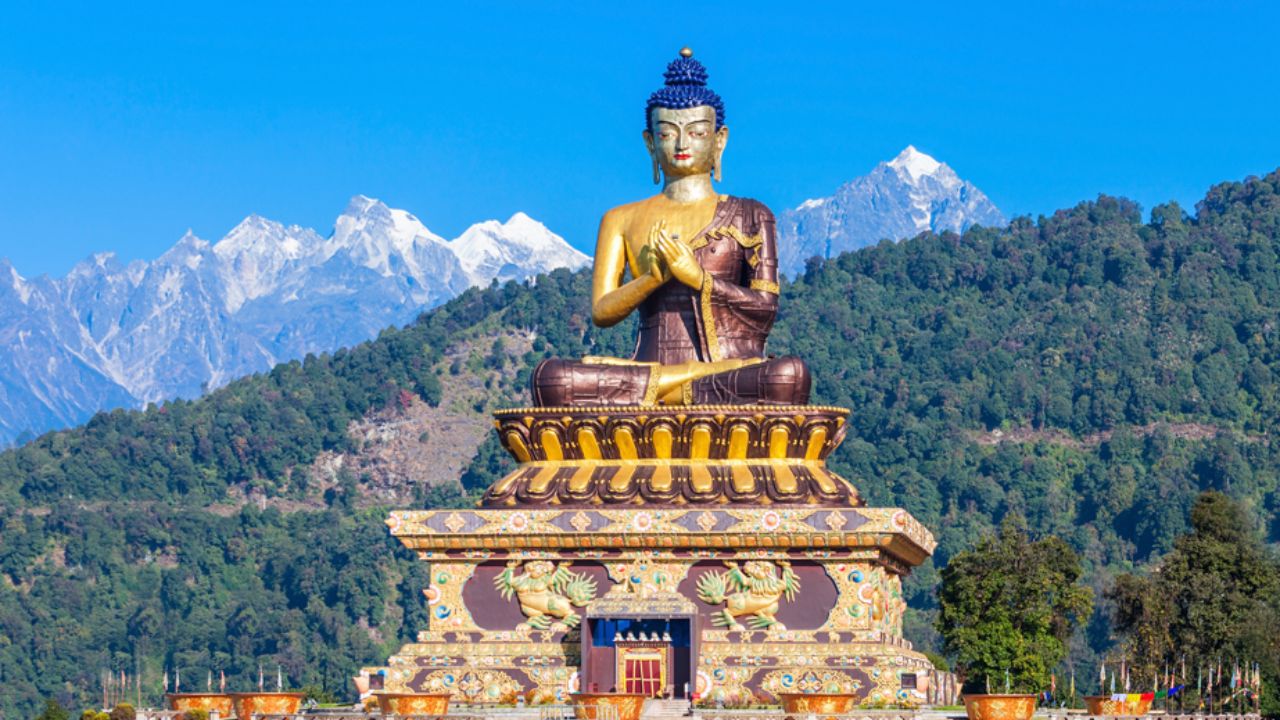Sikkim Statehood Day 2023: How Himalayan Kingdom Merged with India?

Sikkim Statehood Day 2023: To recognise its merging with India and its birth as the 22nd state in the nation, Sikkim observes its statehood day every year on May 16. Sikkim, a former monarchy in the Himalayas, saw several changes on the way to becoming a state. Examine how the area became a part of India as Sikkim Statehood Day is observed.
Greetings to the people of Sikkim on Statehood Day! Sikkim presents a blend of modernity and unique traditions. The state has pioneered organic farming, enriched biodiversity and created a model for sustainable development. I was touched by the warmth of people during my visit of…
— President of India (@rashtrapatibhvn) May 16, 2023
History of Sikkim
-
Three years after India gained its independence, in 1950, Sikkim and the Republic of India signed a pact. The former maintained its position as a "protectorate" state within the Union of India under the terms of the agreement. A smaller country known as a protectorate state is one that is guarded by a larger, sovereign state. A state in this situation is free to conduct its own internal affairs, but a larger nation oversees matters like communications, defence, and foreign policy.
-
By the 1970s, Sikkim's Chogyals had lost most of their support, and there were growing calls for India to annex the erstwhile kingdom.
-
The Chogyals called for a referendum in September 1974. Following a request by the Sikkim Prime Minister, the Indian Army entered the country in April of the following year and seized power.
-
As many as 97.5% of participants in the ensuing referendum supported joining India, while only 2.45% opposed it.
-
The status of the Chogyal was also dissolved after then-Indian President Fakhruddin Ali Ahmed approved a constitutional amendment on May 15, 1975, making Sikkim the country's 22nd state.
-
With its capital in Gangtok, Sikkim now has a population of more than 610,000. It celebrates its statehood day every year with a holiday and a number of activities.
Important Facts about Sikkim
-
Sikkim is a totally organic state, which means that all of its agriculture is either natural or organic. Sikkim became the first entirely organic state in India in 2016.
-
The towering Kanchenjunga, the third-highest mountain in the world, is situated in Sikkim on the boundary between India and Nepal. The peak is 8,586 metres above sea level.
-
Religious travellers make up a large portion of the visitors to Sikkim. In Sikkim, there are numerous renowned Buddhist and Hindu monasteries, including the Rumtek Monastery, the Char Dham Temple, and the Kirateshwar Mahadev Temple.
-
Sikkim has 3,341 square kilometres of total forest cover, or 47.08% of the state's total land area. A UNESCO World Heritage site, Khangchendzonga National Park accounts for 1,784 sq km, or approximately half, of Sikkim's total forest area.
-
Teesta river, an important river of India and Bangladesh originates in Sikkim.
Related Videos
-
25 Feb, 2024
Train Viral Video: Freight Train Started Running Without Driver At The Kathua Railway Station ...
-
25 Aug, 2023
Current Affairs 2023 | 25 August, 2023 | Current Affairs In Hindi ...
-
24 Aug, 2023
Current Affairs 2023 | 24 August, 2023 | Current Affairs In Hindi ...
-
23 Aug, 2023
Current Affairs 2023 | 23 August, 2023 | Current Affairs In Hindi ...
यह भी पढ़ें
-
09 Apr, 2023
IPL 2023 : आज हैदराबाद और पंजाब में कौन मारेगा बाजी, ऐसी हो सकती है दोनों टीम की प्लेइंग इलेवन
-
09 Apr, 2023
कोरियन दूल्हे ने इंडियन स्टाइल में की शादी, घोड़ी भी चढ़ा और भांगड़ा भी किया, वीडियो हुआ वायरल
-
09 Apr, 2023
-
09 Apr, 2023
आकांक्षा दुबे मामले में आरोपी समर सिंह को भीड़ ने दौड़ाया, 14 दिन की न्यायिक हिरासत








